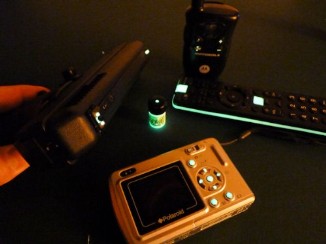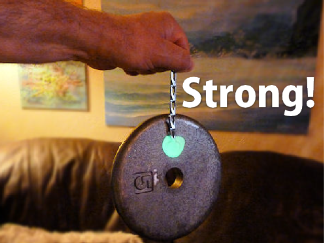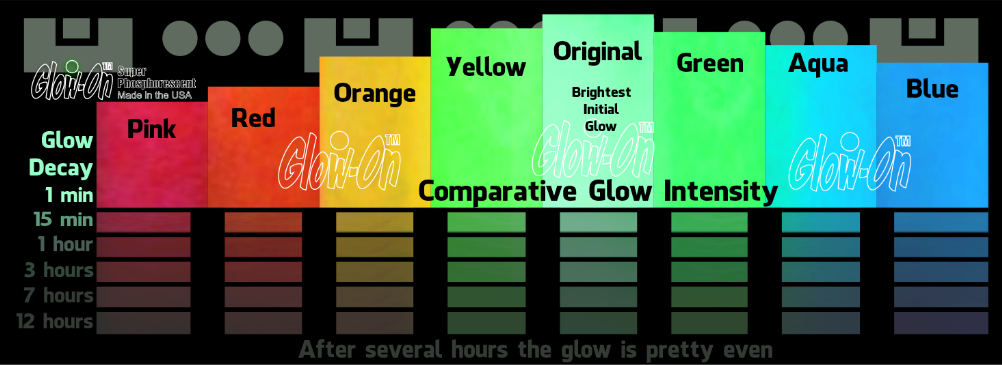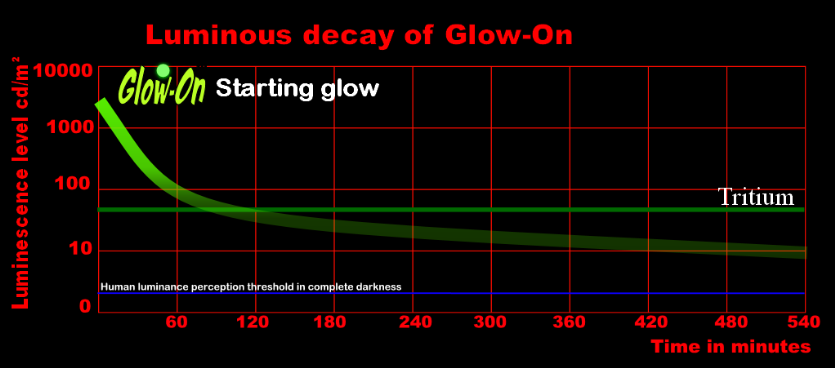How it works - Glow-On
Main menu:





How does it work?
Expose Glow-On for a few seconds to a bright source of light to charge it like an LED lamp. Energy is slowly released in the form of afterglow.
How does Glow-On compare to others
Glow-On is opaque, there is no need to paint a white background to cover dark surfaces.
Glow-On is dense and volumetric.
Great adherence to most surfaces.
Glow-On will stick to most surfaces as long as they are free of oil residue.
Clean the surface with alcohol and a clean paper towel.
Let it cure for a few days for the adherence to become permanent.


A few tips for the use of this product:
What is this "Night Vision"?
Night vision is the natural adaptation of the human vision which allows us to "see" in the dark.
It usually kicks in after 30 minutes in a dark environment.
How does night vision help?:
The glow on this product is very bright for the first fifteen minutes, brighter than tritium, the intensity dims down after awhile and at a slow pace.
When the intensity falls under the luminance level of light in the room, then it only can be seen in complete darkness.
Then our human vision also adapts to this darkness and we can "see" in the dark.
The vision, at this point works a bit different, focusing on the peripheral vision because the cells at the center of vision are "burned' by daylight.
At this level, color cannot be appreciated so regardless of the product, what we see is a whitish glow.
To help your eyes, focus your vision slightly to one side from the glow. Since the center of vision losses sensitivity with years of use, the correct way to "see in the dark" is to use your peripheral vision.

